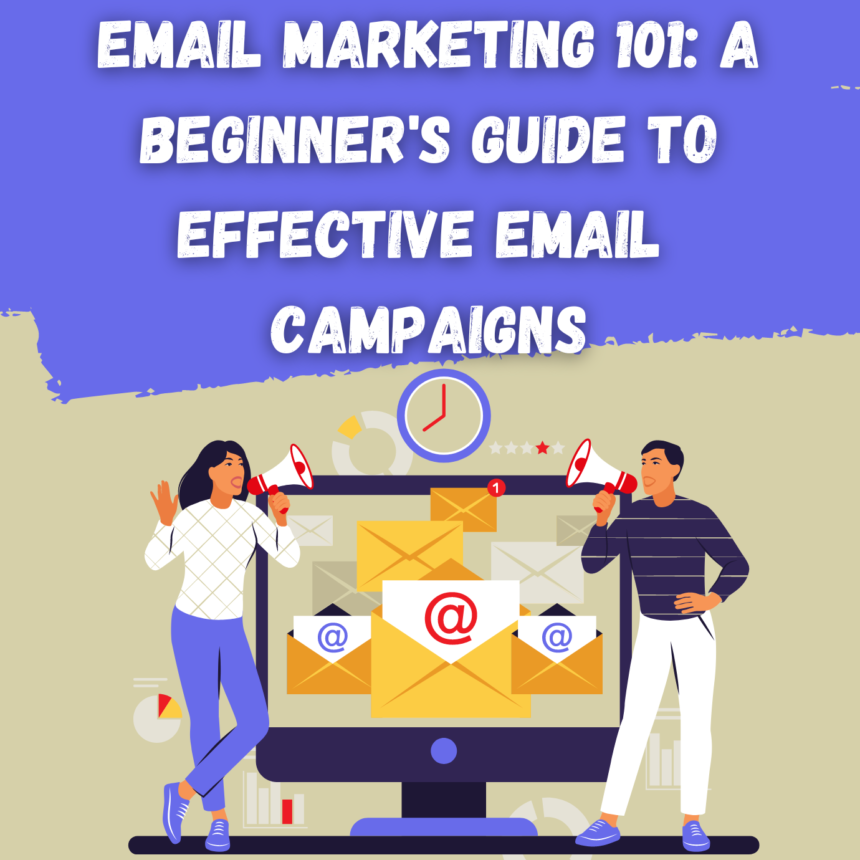In the digital age, email marketing remains a powerful tool for businesses to reach and engage with their audience. When done right, email campaigns can drive customer engagement, increase conversions, and build brand loyalty. If you’re new to email marketing, here’s a beginner’s guide to creating effective email campaigns:
1. Define Your Goals:
Before starting an email campaign, clearly define your goals. Whether it’s promoting a product or service, driving website traffic, or nurturing customer relationships, understanding your objectives will shape your email marketing strategy.
2. Build a Quality Email List:
Focus on building an opt-in email list of subscribers who have willingly expressed interest in your brand. Offer valuable content or incentives to encourage visitors to sign up, and ensure that your email list complies with data protection regulations.
3. Choose an Email Service Provider:
Select a reliable email service provider (ESP) that suits your needs. ESPs offer features like email template creation, subscriber management, automation, and analytics. Popular options include Mailchimp, Constant Contact, and SendinBlue.
4. Craft Compelling Subject Lines:
Subject lines play a crucial role in determining whether recipients open your emails. Create concise, attention-grabbing subject lines that entice readers to click and discover more. Experiment with personalization, urgency, or curiosity to increase open rates.
5. Design Engaging Email Templates:
Create visually appealing email templates that reflect your brand identity. Keep the design clean, use eye-catching visuals, and ensure the layout is mobile-responsive. Incorporate clear calls-to-action (CTAs) that drive readers to take the desired action.
6. Personalize Your Emails:
Segment your email list based on relevant criteria like demographics, purchase history, or engagement level. Personalize your emails by addressing subscribers by name and tailoring content to their interests. Personalization increases engagement and makes recipients feel valued.
7. Craft Relevant and Valuable Content:
Deliver valuable content that resonates with your audience. Provide informative articles, exclusive offers, or useful tips that align with their interests. Keep your emails concise, scannable, and visually appealing to maintain reader engagement.
8. Utilize Email Automation:
Leverage email automation to streamline your campaigns and nurture leads. Set up automated workflows triggered by specific actions or events, such as welcome emails, abandoned cart reminders, or birthday greetings. Automation saves time and ensures timely and relevant communication.
9. Optimize for Mobile Devices:
Given the prevalence of mobile usage, optimize your emails for mobile devices. Test your email templates to ensure they display properly on various screen sizes. Use responsive design techniques, legible fonts, and clear CTAs that are easy to tap on mobile screens.
10. Test and Analyze Results:
Regularly test and analyze your email campaigns to optimize performance. Experiment with different subject lines, layouts, content types, and CTAs to understand what resonates best with your audience. Track key metrics like open rates, click-through rates, and conversions to assess campaign effectiveness.
11. Ensure Compliance with Regulations:
Familiarize yourself with email marketing regulations, such as the CAN-SPAM Act (in the United States) or the General Data Protection Regulation (GDPR) (in the European Union). Ensure that you have proper consent from subscribers and include an unsubscribe option in every email.
12. Monitor Deliverability and Maintain List Hygiene:
Pay attention to email deliverability to ensure your emails reach recipients’ inboxes. Maintain list hygiene by regularly removing inactive or bounced email addresses. Avoid spammy content and follow best practices to maintain a positive sender reputation.
By following these guidelines, you can create effective email campaigns that engage your audience, drive conversions, and help grow your business. Remember to continuously monitor and adapt your strategies based on insights gained from analytics and subscriber feedback.
